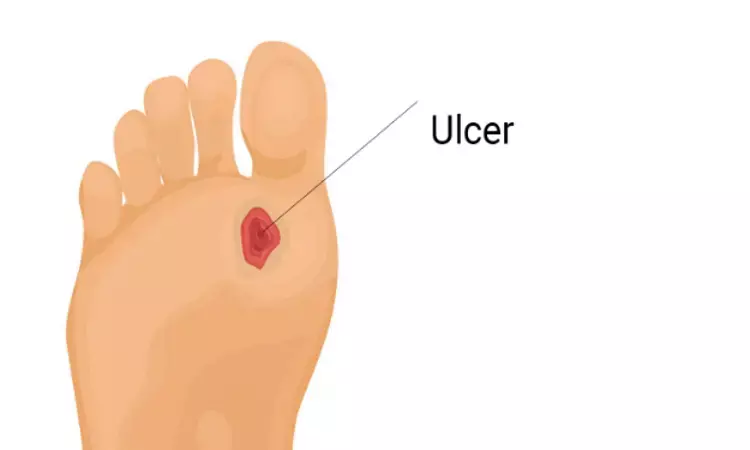- Home
- Medical news & Guidelines
- Anesthesiology
- Cardiology and CTVS
- Critical Care
- Dentistry
- Dermatology
- Diabetes and Endocrinology
- ENT
- Gastroenterology
- Medicine
- Nephrology
- Neurology
- Obstretics-Gynaecology
- Oncology
- Ophthalmology
- Orthopaedics
- Pediatrics-Neonatology
- Psychiatry
- Pulmonology
- Radiology
- Surgery
- Urology
- Laboratory Medicine
- Diet
- Nursing
- Paramedical
- Physiotherapy
- Health news
- Fact Check
- Bone Health Fact Check
- Brain Health Fact Check
- Cancer Related Fact Check
- Child Care Fact Check
- Dental and oral health fact check
- Diabetes and metabolic health fact check
- Diet and Nutrition Fact Check
- Eye and ENT Care Fact Check
- Fitness fact check
- Gut health fact check
- Heart health fact check
- Kidney health fact check
- Medical education fact check
- Men's health fact check
- Respiratory fact check
- Skin and hair care fact check
- Vaccine and Immunization fact check
- Women's health fact check
- AYUSH
- State News
- Andaman and Nicobar Islands
- Andhra Pradesh
- Arunachal Pradesh
- Assam
- Bihar
- Chandigarh
- Chattisgarh
- Dadra and Nagar Haveli
- Daman and Diu
- Delhi
- Goa
- Gujarat
- Haryana
- Himachal Pradesh
- Jammu & Kashmir
- Jharkhand
- Karnataka
- Kerala
- Ladakh
- Lakshadweep
- Madhya Pradesh
- Maharashtra
- Manipur
- Meghalaya
- Mizoram
- Nagaland
- Odisha
- Puducherry
- Punjab
- Rajasthan
- Sikkim
- Tamil Nadu
- Telangana
- Tripura
- Uttar Pradesh
- Uttrakhand
- West Bengal
- Medical Education
- Industry
Hyperbaric Oxygen effective option for non healing chronic diabetic foot ulcers

Hyperbaric Oxygen has been found to have a tremendous role in wound healing in refractory diabetic ulcers, finds a new study.
US: Diabetic foot is one of the most significant and devastating complications of diabetes, defined as a foot affected by ulceration that is associated with neuropathy and/or peripheral arterial disease of the lower limb. It is estimated that about 5% of all patients with diabetes present with a history of foot ulceration, while the lifetime risk of diabetic patients developing this complication is 15%.
The majority (60–80%) of foot ulcers will heal, while 10–15% of them will remain active, and 5–24% of them will finally lead to limb amputation within a period of 6–18 months after the first evaluation. In the view of reducing this morbidity researchers at the University of Texas had done a double-blinded sham-controlled clinical trial which was published in the Journal of Diabetic Care.
The study was done to assess the efficacy of multimodality cyclical pressure Topical Wound Oxygen (TWO2) home care therapy in healing refractory diabetic foot ulcers (DFUs) that had failed to heal with a standard of care (SOC) alone.
The double-blind sham-controlled clinical trial was a multicenter study of patients with type 1 or type 2 diabetes from 17 diabetic foot centers across the United States, United Kingdom, France, Germany, and Luxembourg. All patients received optimal standard of care and were randomly assigned to receive active TWO2 therapy or sham control treatment. The primary outcome was the percentage of ulcers in each group achieving 100% healing at 12 weeks.
37 patients were randomly assigned to standard of care and sham therapy (mean age, 61.9±9.5 years; 84% men) and 36 to the standard of care and active TWO2 therapy (mean age, 64.6±10.3 years; 89% men). Of these, 3 patients in the active therapy group and 4 patients in the control group were lost to follow-up.
At 12 weeks, the active TWO2 therapy was superior to sham therapy, as complete healing was evident in 15 wounds (41.7%) compared with 5 wounds (13.5%), respectively. The study had several limitations, including its small sample size and focus on patients with more difficult wounds to heal.
"This robust double-blinded, sham-controlled trial provides evidence to support use of this adjunctive cyclical pressurized [topical oxygen therapy] for chronic [diabetic foot ulcers]," concluded the researchers.
For further reading click on the following link,
MBBS
Dr K B AARTHI-has completed MBBS from SRM UNIVERSITY TAMIL NADU,Her interest is in the field of Pediatrics and Anaesthesia, also passionate in doing research and publishing articles.She joined Medical Dialogues in 2020 and publishes health news and medical updates. Email: editorial@medicaldialogues.in. Contact no. 011-43720751,9786713226
Dr Kamal Kant Kohli-MBBS, DTCD- a chest specialist with more than 30 years of practice and a flair for writing clinical articles, Dr Kamal Kant Kohli joined Medical Dialogues as a Chief Editor of Medical News. Besides writing articles, as an editor, he proofreads and verifies all the medical content published on Medical Dialogues including those coming from journals, studies,medical conferences,guidelines etc. Email: drkohli@medicaldialogues.in. Contact no. 011-43720751


